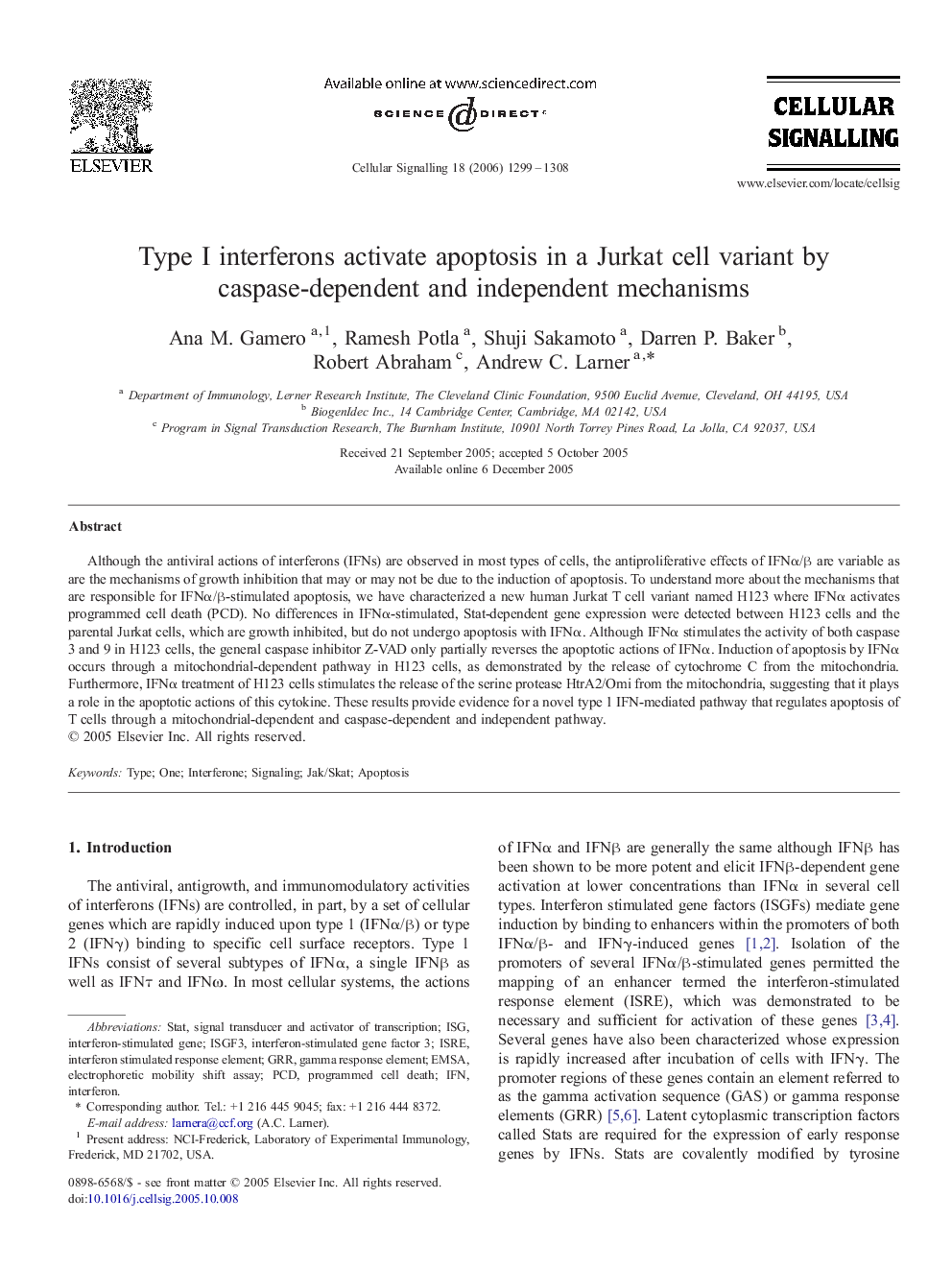| Article ID | Journal | Published Year | Pages | File Type |
|---|---|---|---|---|
| 1964976 | Cellular Signalling | 2006 | 10 Pages |
Although the antiviral actions of interferons (IFNs) are observed in most types of cells, the antiproliferative effects of IFNα/β are variable as are the mechanisms of growth inhibition that may or may not be due to the induction of apoptosis. To understand more about the mechanisms that are responsible for IFNα/β-stimulated apoptosis, we have characterized a new human Jurkat T cell variant named H123 where IFNα activates programmed cell death (PCD). No differences in IFNα-stimulated, Stat-dependent gene expression were detected between H123 cells and the parental Jurkat cells, which are growth inhibited, but do not undergo apoptosis with IFNα. Although IFNα stimulates the activity of both caspase 3 and 9 in H123 cells, the general caspase inhibitor Z-VAD only partially reverses the apoptotic actions of IFNα. Induction of apoptosis by IFNα occurs through a mitochondrial-dependent pathway in H123 cells, as demonstrated by the release of cytochrome C from the mitochondria. Furthermore, IFNα treatment of H123 cells stimulates the release of the serine protease HtrA2/Omi from the mitochondria, suggesting that it plays a role in the apoptotic actions of this cytokine. These results provide evidence for a novel type 1 IFN-mediated pathway that regulates apoptosis of T cells through a mitochondrial-dependent and caspase-dependent and independent pathway.
